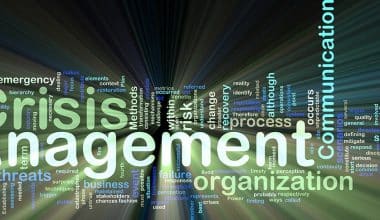Every leader aspires to be a good and effective leader, but developing leadership skills requires time. Web searches for “qualities of a good leader” produced no results when done quickly. Instead, improving yourself, enrolling in management and leadership certification programs, and imitating great leaders would. Learn about the characteristics that suggest the greatest and worst qualities of a leader as you keep reading.
Qualities of a Leader
Every company’s successful leader can be shaped by a few key characteristics. A well-rounded leader may provide motivation and guidance to everyone around them. Their leadership style blends authority with a positive approach in order to enhance the talents of their team members and create a setting where they can be open, honest, and productive at work.
Effective leaders have authority, kindness, and a growth mindset. This illustrates how consistently they are centered on the broader mission and common goal of their company or group. The qualities of a successful leader include self-awareness, a focus on relationships, a tendency toward action, humility, the ability to empower others, loyalty to one’s own identity, presenting oneself as constant and consistent, setting an example for others, and being fully present.
How to Develop Your Leadership Skill
Now that we are more aware of what qualities make a successful leader, what are some techniques for developing and utilizing these skills? Successful leaders don’t just appear. If you want to develop as a leader and achieve your personal and professional goals, you have to start somewhere.
Think about the following concepts:
#1. Test, Try, and Get Better:
After trying out a few simple actions or tweaks, ask a friend or coworker for feedback. Choose one or two characteristics from the list of characteristics displayed by exceptional leaders to work on as a starting point, and then give it a shot. Try acting or speaking in a different way during a meeting to increase your self-awareness. Next, contrast how you perceived what you were doing with how a coworker perceived it.
#2. Assemble a Group of Partners
Select one or two people to act as your initial mentors or accountability partners. Mentors help us gain fresh viewpoints on how we behave and interpret workplace events. Our accountability partners help us stay focused on our goals. Ask a positive role model to be your mentor or accountability buddy.
#3. Build Connections
Effective leaders are relationship builders. Start small and expand your network over time. Each week, try striking up a conversation with one or two coworkers you don’t typically interact with, and build from there. Your circle of contacts will grow quickly.
#4. Developing your Leadership Skills
Apply for a degree or enroll in a program. For instance, you might wish to add a leadership undergraduate emphasis if you’re seeking a bachelor’s degree. If you presently hold a bachelor’s degree, taking the next step toward a full master’s degree in organizational leadership or a graduate certificate in leadership may be appropriate.
Greatest Qualities of a Leader
The following leadership traits are exhibited by effective leaders in both their personal and professional lives, motivating others to take initiative and chart the future. In order to fully profit from these qualities, you need to continuously carry out some essential tasks. Below are some of the qualities of a leader and they are rated greatest of all times:
#1. Concentrate Fully.
Since they are continuously being tugged in numerous directions at once, leaders could find this challenging. To be present for the team members, the leader must pay close attention to everything the team says, does, and accomplishes. Leaders that don’t offer their team members their whole attention and show signs of being distracted are not there.
#2. Establish a Positive Example for Others to Follow
Although they may not be aware of it, followers are always keeping an eye on leaders. Team members imitate the conduct of the team leader by observing how they react to messages or circumstances and modeling their own reactions after those. Good leaders set an example for their team to follow by being conscious of the fact that they are being watched by them. For instance, team members will eventually start to respond the same way if leaders support unanticipated changes.
#3. Always be Genuine
Being authentic means acting in a way that is true to who we are rather than trying to act like someone else. Team members may recognize true leaders for who they truly are when they work with them, and with time, they get adjusted to the style of the leader.
#4. Display Humility
One of those words that is frequently misinterpreted is humility. People who are humble often have low self-esteem and don’t value their achievements. In other words, humility is having a poor opinion of oneself while having a good opinion of others.
Leaders who are selfless are less likely to claim credit for the efforts of others. They fiercely defend the demands of their coworkers and prioritize the requirements of the team over their own. Humble leaders earn the respect of their followers and assist them in growing and expanding beyond what they may have first believed was possible by putting others before themselves.
#5. Make Building Relationships a Top Priority.
The task itself was viewed as being the most significant aspect of the workplace by early management researchers. They carried out studies and created strategies to boost worker output, but they paid little attention to the needs of the workers as individuals. The human elements of employees, such as their need to build relationships with team members, are taken into account by modern leadership theories, which take a more comprehensive approach to the workplace.
Employees cannot bring solely the aspect of themselves that performs the work to their place of employment since they are human. Leaders need to be exceptional relationship builders in all areas because they bring their whole selves to the table.
#6. Self-Awareness.
Self-awareness is among the greatest qualities of a great leader. The person in charge must always be aware of what they say, do, and show with their body language. Team members continually watch their leaders, even if they aren’t always aware of it, and they model their actions and reactions after how they think the leader should act.
When there is a lot of change or stress, self-awareness is crucial. Employees will react similarly, whether they are aware of it or not, and they will look to the leader for both formal and informal advice on how to handle the shift or stress.
Best Qualities of a Leader
There are some traits of a great leader that appear to apply in any situation; these are traits that every exceptional leader should have or strive for.
#1. Vision
The capacity to understand the big picture of where the company or team they are working for is heading, what it is capable of, and what it will take to get there is perhaps the best quality a leader can have.
#2. Inspiration
Being able to inspire and motivate others is just as crucial as having your own vision. This entails continuing to be a positive yet grounded presence within the company in order to support the team members’ retention of their goals, motivation, and engagement.
#3. Critical and Strategic Thinking
A successful leader will be able to assess their team or group and completely comprehend all of the opportunities, risks, and advantages that exist (and how they as an individual can work to support or overcome these). When necessary, they will be able to modify their plans. They will also be able to evaluate their work to see how it contributes to the larger corporate strategy and goals.
#4. Individuals’ Communication
Effective leaders must have the ability to communicate with others in a way that comes across as genuine. Given that many successful leaders self-identify as introverts, being a leader doesn’t necessarily require you to be an extrovert or people-person. It entails building strong professional relationships with everyone who is near you, whether they are a colleague or one of your direct reports, and being able to show empathy and engage in active listening.
#5. Integrity and Consciousness of Oneself
Having a leadership style that is authentic to you and how you perform your best job, as well as being self-aware enough to recognize your strengths and weaknesses, are two factors in becoming a great leader. Instead of trying to fit into a template that someone else created, you want to be the best leader you can be. Try to embrace the characteristics that make you unique; doing so will undoubtedly result in the creation of an authentic leadership style.
#6. Originality and adaptability
Understanding that there is no one “correct” method to carry out a task and being open to new ideas, opportunities, and viewpoints are both necessary qualities of a successful leader. Understanding that change is necessary for success, being open to new ideas that might spark creativity, and attempting to think beyond the box are all characteristics of effective leadership. To be effective, leaders must be able to observe, listen, and adapt.
#7. Flexibility
When necessary, leadership also calls for flexibility and adaptability. Nothing ever goes as planned, so be ready to stop, reconsider your course of action, and come to a fresh conclusion if you face little setbacks or significant impediments. Good leaders will be able to inspire people to follow their example by embracing the dynamic nature of their businesses and approaching issues with adaptability.
Bad Qualities of a Leader
Bad leadership occurs when an individual (the leader) lowers the workgroup’s morale, sets goals that exclusively suit its interests, demoralizes it, and adversely impacts its performance in accomplishing a strategic goal. Subordinates frequently overlook poor leadership traits. The oppressive nature of the bad leader is the cause of his bad qualities. Let us see some of the bad qualities of a leader you can avoid possessing if you want to be a good leader:
#1. Irrational and Arrogant
Being arrogant and selfish is among the most irritating qualities in a lousy leader. Poor leaders enjoy pointing the finger at others for their mistakes. Besides taking the glory when things go smoothly. Without his or her supporters, a leader has no power. Without it, he wouldn’t be able to carry out the aims and purposes of the initiatives and the business he represents. Additionally, it motivates them to act solely in their own best interests. without taking into account the team’s other members.
#2. Inadequate Work Ethics
Acting unethically is a famous example of a terrible leadership characteristic. Things go wrong when a poor leader lacks ethics. Therefore, he or she is unable to guide and motivate others. A powerful leader inspires people with his fervor, work ethic, and effort. Because of these qualities, he is admired and looked up to by many. This gives people the inspiration they require to accomplish their own objectives.
#3. Lacking the Ability to Follow
If you have never been a successful leader, imagine how challenging it must be. A follower needs practical experience in that role to manage a team well. Without this context, it’s challenging, if not impossible, to understand your team or know what to anticipate from them. More significantly, the finest leaders know when to step aside and let others take the initiative when others are more knowledgeable or skilled in a given area than they are. They must therefore be prepared and willing to lead through followership when necessary.
#4. Refuse to Take Responsibility
You’re probably familiar with the idea that the ship’s captain should perish with it. This leadership guideline helps separate good managers from bad ones. Because team leaders should be held responsible for mistakes and given credit for achievements. After all, it is their duty to ensure that objectives are achieved in a suitable and efficient manner. Because of this, people must take responsibility when they are not. Employees are able to immediately identify when leaders fail to do this. Failure to accept responsibility can result in long-lasting feelings of animosity, just like other traits of poor leaders.
#5. Encouraging Selfishness and Arrogance
Despite the fact that the majority of people in today’s society aren’t accustomed to hearing the word vainglory, it is a vice that is commonly practiced. If pride is the inner sense that you are better than others, vainglory is the fixation with getting praise from others above all else. Consequently, it is overly vain. The most common pitfall that leaders fall into is this one. It can be tempting to claim ownership of your success as the manager of a successful group or business and seize the spotlight. Effective leaders, though, need to be mindful of these temptations and maintain their modesty.
#6. Creating Unrealistic Standards
One of the worst sensations a hard-working team can have is falling short of their boss’s expectations. Optimism that your goals can be accomplished after investing so much blood, sweat, and tears is only natural. Setting inflated expectations for teams is one of the traits of a bad leader, though. Both staff and leaders could suffer significant injuries as a result of this technique. Considering that managers create plans for outcomes that won’t come to pass. Additionally, there is pressure on supporters to make something really unlikely occur. Conflict, disillusionment, and mistrust could result from this. As a result, it is crucial for executives to have a thorough understanding of the market situation and to establish reasonable goals.
What are the 11 Principles of Leadership?
The eleven guidelines for leadership:
- Understand who you are and work to become better.
- possess both technical and tactical proficiency.
- Create a sense of accountability among your employees.
- Make wise selections in a timely manner.
- Be a role model.
- Keep an eye out for the welfare of your people.
- Inform your audience regularly.
What are the 8 Essentials in Leadership?
8 crucial characteristics of great leadership:
- Greatly excited
- The quality of integrity.
- Excellent communication abilities.
- Being loyal.
- Sense of direction.
- Managerial proficiency.
- Having power.
- Charisma.
What are the Three 3 Main Ideal Leadership Qualities?
3 characteristics of a leader:
- They prioritize their own development and are self-aware.
- They concentrate on helping others grow.
- They support strategic thinking, invention, and movement.
What are the 3 Important Keys for an Effective Leader?
Three characteristics of a successful leader:
- Strong Personality. Peers esteem leaders who have great moral character.
- Swift, Committed Decision Making.
- They are accessible when you need them.
- Further Resources.
What are 3 Major Features of an Effective Leader?
Qualities of a successful leader:
- The capacity to influence others.
- Transparency
- Encourage Taking Risks
- Creative thinking.
- Integrity and ethics are important.
- Make a decision.
Related Articles
- HOW TO BE A LEADER: Becoming the Leader of Your Dreams
- SELF AWARENESS: How to Identify, Build up Skills and Benefits
- LEADERSHIP TRAITS: Top 7 Qualities of an Effective Leader
- LEADERSHIP VALUES: Importance of Values In leadership
- 6 Elements for Effective Business Leadership






